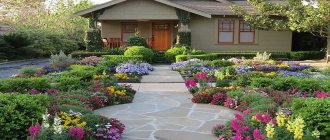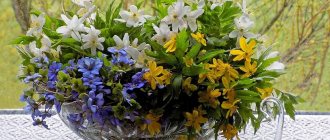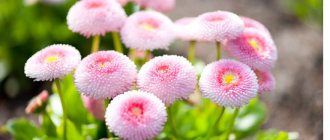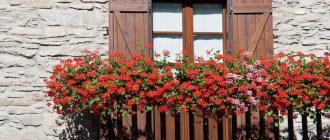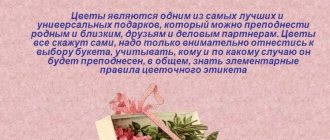Perennials come in an endless variety of shapes, sizes, colors and textures. The bright and attractive colors of perennials will create colorful compositions in your flower beds, rock gardens, flower beds and borders, in your containers, pots and baskets. Yellow is special in the color spectrum - it denotes joy and happiness. In addition to this, yellow is also the most visible color out of all the colors to the human eye. With a softer and more attractive hue than orange or red, yellow perennial garden flowers always have a charming effect. From subtle to vibrant, yellow perennial flowers always deserve a place in any garden.
Which yellow perennials to choose for the garden
You can enjoy yellow flowers in the garden throughout the growing season, from the fragrant flowers of Mimosa and Narcissus in spring to late-blooming perennials such as Rudbeckia. Yellow is a cheerful, sunny color and is very versatile - it can be paired with colors in red or orange, or contrasted with blue or purple for a softer look.
Yellow perennials will bring a bit of sunshine to your garden
If you are having a hard time choosing or identifying the right yellow perennials for your garden, you can check out this list of the best yellow perennial flowers. These perennials are grouped according to their growth. For quicker access, you can simply click on the names below to learn more about how to care for them.
Irises
Rhizomatous perennial plants. The leaves are flat, sword-shaped, with a slight waxy coating. Flowers are solitary or collected in small inflorescences. An unusually delicate beautiful flower. Often with a pleasant aroma.
The variety of colors and shades of irises is amazing. Often the upper petals are lighter in color. They bloom from May to July. Each flower pleases the eye from one to five days. When cut, they are short-lived, but due to the fact that they do not open at the same time, they replace each other, the bouquet looks quite decent for a long time.
Depending on the shape of the flower, irises are either bearded or non-bearded. The first are distinguished by the presence of hairy processes on the flower at the base of the petal. It is often heavily corrugated. Both types have brown flowers. It is chocolate, terracotta, soft coffee and rich brown.
The Kopatonic variety has light brown upper petals and dark brown lower petals, forming a lacy edge. The beard is mustard yellow. The height of this plant reaches 85 cm.
The upper petals of the Fiesta Time variety are amber-golden, and the lower petals are purple-brown. Beautiful flower with wavy petals.
The Minisa variety has plain dark chestnut ruffled flowers and an orange beard.
Smart Muv with light brown upper petals and pink-walnut lower petals with a brown base is a late variety with slightly ruffled flowers.
These are just a few of the varieties of irises whose flowers are brown.
Which low-growing yellow perennial flowers to add to your garden
Nature offers us a wide variety of ground cover yellow perennial flowers. And there is plenty to choose from:
Adonis
Members of the genus Adonis are generally short-growing plants, although some species can reach 50 cm in height. Perennial Adonis in a wide variety of shades have yellow flowers reminiscent of buttercups.
Photos of ground cover Adonis
Due to the very early flowering of these perennials, they are excellent for use in the garden and can look great when grown in garden path borders or rock gardens.
You might be interested
Choosing purple perennial flowers for your garden
Red perennials: the best plants to grow in the garden
List of the best blue flowers and plants with blue foliage
Perennial Cannes
Flower culture includes more than 50 species. Flowers in the form of paniculate or racemose inflorescences of a bright yellow, yellowish-orange hue.
Cannas in the garden go well with other low-growing flowers.
Daffodils
Another low-growing representative of bulbous plants, one of the first flowering garden crops. The ease with which most types of Narcissus can be grown is surprising because, being primarily native to Southern Europe and Northern Africa, they are highly adaptable to a wide range of soil and climate conditions.
Early spring is the time of Narcissus
Enjoy every moment of the Narcissus blooming in the spring, as it will be a whole year before you can enjoy their beauty and scent again.
Marigold
Another beautiful and useful perennial that blooms with yellow flowers. They are used in a variety of flower beds: in flower beds, ridges, on borders along paths, in rock gardens.
In flower shops you can buy marigold seeds of the most amazing shapes and colors.
They protect neighboring plants from pests such as aphids, cabbageweed and other insects. In the garden center you can always find marigold seeds of various colors and shapes.
Tulips
Representatives of bulbous perennials are well known to everyone. Incredible shapes and variety of colors of this flower.
There are few flower crops that can compare with the diversity of the tulip's color palette.
Yellow tulips of the Golden Apeldoorn, Yellow Crow, and Monte Carlo varieties begin to bloom in early spring, and can be grown in greenhouses all year round. Plants have strong elastic stems. They will not only complement your flowerbed, but will also become a wonderful decoration as a bouquet.
Chrysanthemum
Cute and delicate perennials of the Asteraceae family, resembling daisies in appearance, refresh even an abandoned garden.
Calibrachoa from Seeds: 5 Helpful Tips for Growing
Popular early varieties: Orange - a compact bush 50-60 cm high, and Golden Fleece, reaching a height of over 100 cm. Flowering begins in August and continues until the end of summer.
Among the late varieties, gardeners distinguish the Rivardi chrysanthemum. This is a perennial with beautiful and large flowers, reaching 20 cm in diameter. Flowering begins in the second half of October.
Chrysanthemum welcomes fertilizing with complex fertilizers, which is carried out once every 7 days. Reproduction methods: seeds and cuttings.
There are many varieties of yellow chrysanthemum. They differ in the size of the inflorescences, the shape of the petals, and the degree of color saturation.
The most popular:
- Pompom.
- Joy.
- Reagan.
The varieties are bred artificially for garden interior design and festive compositions.
Tall yellow perennial flowers
To hide an unsightly fence or create a unique backdrop in your garden, simply plant tall perennials bearing yellow flowers in a row to create the illusion of a living fence. List of common tall garden flowers:
Imperial hazel grouse
A beautiful plant with a height of 60 cm to 1.2 m. The flowers are formed in the form of inflorescences consisting of “bells” of various shades: yellow, red, white.
Photo of yellow grouse (commons.wikimedia.org)
Blooming perennial yellow fritillary flowers will always attract attention. They are often planted in group plantings in a flower bed or in the space between bushes.
Dahlias
Thanks to their ability to maintain flowering until the first frost and easy care, these flowers are frequent guests of garden beds.
There are dwarf varieties for planting in containers and flowerpots, but most plants are quite tall and can grow up to 2.5 m. Dahlias require an area with good drainage and partial or full light.
Gladioli
If you are planning to decorate your garden with tall yellow flowers, then it is time to plant this unforgettable flower.
The second name of gladiolus is “sword” from the similarity of long narrow leaves with swords
Gladioli are the most frequent guests in most garden areas. You can choose from different shades to create a colorful flower garden.
Heliopsis rough
Perennial with yellow flowers, native to America. The most popular species is Heliopsis helianthoides.
Heliopsis is an excellent tall perennial for the background of a flower bed or mixborder. It has a bushy, well-branched form and shiny dark green triangular leaves. Flowering continues throughout the summer.
You can also add Kniphofia, Gelenium, Goldenrod, Eremurus and others to the list of popular tall yellow perennials.
Viola
Yellow perennial is a frequent visitor to home gardens. The second name is fragrant violet. A miniature plant with a bright flower crowning the stem, 15-20 cm in diameter. The peduncle is almost without leaves. This enhances the original image of the viola.
Flowering begins in May and lasts 2-3 months. The flowers are a hit with gardeners. Violas are often used to decorate park areas and gardens, as well as to decorate fences, stairs, and borders.
Planting a plant is not difficult. Sow seeds in the soil or use seedlings. Viola takes root on any soil. But with insufficient lighting and drafts, the flowers lose their beauty. They become rare and inconspicuous. High humidity is also not recommended, as it leads to fungal damage to the root system.
Long-blooming yellow perennials
Perennial garden plants, as a rule, are not long-flowering, unlike annual crops. Perennials bloom for only one season, investing most of their energy in the roots, stems and foliage. But there are flowering perennial crops that can decorate the garden with their blooms for a couple of seasons. Here are some examples of such plants that will bring yellow sunshine to your garden.
Echinacea is strange
An herbaceous perennial, the most unique of the coneflowers, blooming with yellow flowers rather than purple. Hence the name E. paradoxa.
Easily adaptable look. Flowering period - from late spring to mid-summer. If you remove faded flowers in a timely manner, flowering can be extended. Definitely deserves a place in flower beds and other flower beds in the garden.
Rudbeckia
The flower has become one of our most popular garden plants in recent years, and it's no surprise - the densely growing plants produce masses of flowers with a long flowering period from July to October.
Rudbeckias are characterized by their bright, daisy-like flowers. Flower borders and flower beds, patios, containers, summer cottages - it will be an excellent addition to any flower arrangement.
Gaillardia aristata
A long-flowering perennial native to North America. Grows well in both wet conditions and dry areas.
Flowering time: summer-autumn. The flower is resistant to pests. Looks great in mixborders, as a border or container plant. It lasts a long time in a bouquet.
Garden Daylily
The perennial blooms yellow all summer and grows up to 45 cm in height. Provides color and contrast to a perennial flower bed.
This species can be effective in controlling soil erosion when planted on slopes. Elegant foliage provides background and texture to the garden when flowers are not in bloom.
Heliopsis sunflower
Flowering period: from June to September. An unusual flower with branched stems. This plant looks like real little sunflowers.
But unlike them, its petals are retained on the flowers. Heliopsis is hardy and easy to grow as a showy garden perennial in dry areas and is a good choice for clay soils.
Outdoor care
With a plant such as Doronicum, planting and care are not difficult. The flower is unpretentious and withstands weather anomalies.
Watering
Doronicum should be watered regularly, since the root system, located near the surface, cannot take moisture from the deep layers of the soil. It is better to use settled water. To prevent the soil from drying out longer, it is recommended to mulch it with sawdust.
Spraying
In hot weather, the plant will benefit from evening spraying or sprinkling. There is no need to be too zealous with watering, so as not to provoke disease. Yellow daisies do not like excess humidity and shade, so it is better not to place them under large trees or in lowlands.
Priming
Kozulnik does not like acidic, clayey, heavy soils. Most likely, the hardy plant will not die, but will grow small, weak, with small flowers. The best option is light, loose, slightly acidic soil with a sufficient amount of nutrients.
Feeding
In spring, the plant can be pampered with complex fertilizers; the flower responds equally well to both mineral compounds and organic matter. At the end of summer, when new rosettes are growing, it would not be a bad idea to feed the roe grass with nitrogen-containing compounds.
Alyssum
Varieties of this plant can be either annual or perennial. These low-growing yellow flowers reach a height of about 20–40 centimeters, so they are often planted in flower beds. Alyssum is very branchy, its flowers are a large number of inflorescences that look very cute. Each inflorescence has four petals. The diameter of the flowers is about 5 mm.
The plant also has a light honey aroma, which is why beneficial insects constantly fly around it and pollinate nearby crops. Under good environmental conditions and proper care, alyssum grows spreading, its flowers cover the ground like a carpet.
Sunflower
These yellow wildflowers have their own charm. The sunflower got its name because of its appearance. The sun flower resembles a luminary in appearance. He turns to follow the sun, walking with it from sunrise to sunset. The root is thick and strong. Numerous leaves are rough, they are slightly pointed at the top. Their number varies from 15 to 35 pieces. At the top of the stem there is a basket-shaped inflorescence. It is surrounded by green leaves. It contains golden-colored flowers.
Yellow sunflower wildflowers are not just beautiful. They are beneficial to humans. The seeds contain vitamin E and polyunsaturated acids, which are necessary for the human body. They can lower body temperature or stimulate appetite. Sunflower inflorescences, stems, roots and leaves are also useful.
Primrose
The flowering period of primrose occurs in spring, which is why it got its name. Translated from Latin, it means “first”. The plant is unpretentious, so it is often grown at home, on balconies. It not only decorates the space, but also has health benefits. Thus, primrose leaves contain vitamin C, which is essential for humans. One of the most popular plant varieties is a hybrid with large yellow-orange flowers.
The five-membered flowers have a regular shape. They can be either single or collected in inflorescences, which are located at the ends of the stems. The leaves are covered with soft, short hairs. They are a little wrinkled. Almost all varieties are low herbs.
Rudbeckia
Yellow garden rudbeckia flowers delight with their beauty throughout the warm season. They are widely used in landscape design. The plant gained popularity due to its huge flowers painted in a shade of gold. Variegated petals decorate the surrounding area until the first frost. People associate Rudbeckia with the wonderful time of childhood, with warm sun rays. This cold-resistant crop is native to North America.
Rudbeckia is undemanding to soil. The flowering period occurs at the height of summer, namely in July and August. The black button heads that remain after flowering are given special beauty to the plant. Large flowers with a black core are located on stems up to half a meter high that bend down to the ground. Each inflorescence has a diameter of up to 15 cm, while buds of different sizes can be located on one bush.
Nasturtium
This unpretentious plant can be grown anywhere. Nasturtium can decorate any garden with its neat flowers, painted in a pleasant yellow shade. This plant is graceful. Its flowering lasts for quite a long time. Breeders have bred more than 80 varieties of nasturtium. Double and simple, orange and yellow flowers - they are all very popular. They give off a pleasant aroma. The smell is very strong, which is how the plant got its name. Literally it means “to turn your nose.”
The stems creeping along the ground curl. They can even reach 3 meters in length. The leaves have a round shape. Yellow and orange buds bloom in their axils. At sunset they take on a reddish tint. Interestingly, all parts of the plant are edible. They are used to decorate dishes and prepare salads. They are also used in medicine as antiseptics.
